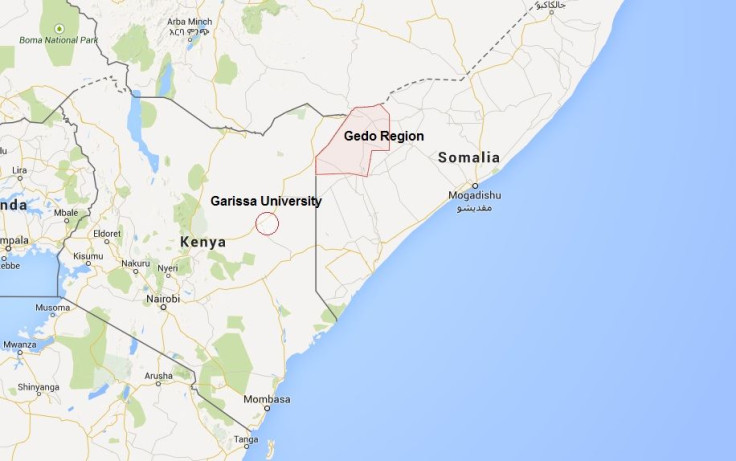Cornered Al-Shabab Sets Sights Away From Somalia, May Step Up Attacks

The brutality of Somali terrorist group al-Shabab, whose latest atrocity killed 148 people last week at Garissa University in Kenya, has spurred African nations to unite in an effort to defeat the group. But military advances may have helped create a bigger problem.
After the Garissa attack, the Kenyan air force bombed in retaliation al-Shabab training camps in Somalia. A 21,000-strong force from six African Union countries continues to score victories against the militants within Somalia itself.
That military push against al-Shabab, experts say, is working, but it may have exacerbated an internal rift within the group, adding fuel to the hardline members whose interests lie beyond Somalia.
“Al-Shabab has never been monolithic. It’s a rather confusing coalition of overlapping ideological groups and clan interests,” said Peter Pham, head of the Atlantic Council’s Africa Center. The group has its own internal factions. While some members are focused on gaining territory and power in Somalia, a growing faction is more interested in being part of a global jihad movement. The hard-line jihadists are taking over and pushing al-Shabab to increasingly desperate measures to prove themselves members of a more global movement -- which may result in more large-scale attacks as it finds itself cornered.
“I would definitely expect that the attack in Garissa, dreadful and brutal as it was, is but the first of many,” Pham said.
In the past few months, the African Union Mission in Somalia (Amisom), has made advances against al-Shabab. Most of the capital city Mogadishu is now controlled by the Somali government, which once held power over just some neighborhoods in the capital while the rest of the nation remained essentially a lawless, failed state, with al-Shabab in charge of vast chunks of territory.
Last year, American airstrikes killed the group’s leader, Ahmed Abdi Godane. And in March, Amisom troops seized the island of Kuday, pushing al-Shabab out of the port of Kismayo, a key stronghold and source of income. In the same month, a U.S. drone killed Adnon Garaar, the man thought to be the mastermind of the Westgate mall attack, which killed 67 in Nairobi, Kenya, in 2013.

Kenya was instrumental in clearing al-Shabab fighters from Kismayo, around 150 miles from Kenya’s border, thanks to “its excellent infantry and maritime military capabilities” said Larry Hanauer, senior international policy analyst at the Washington-based think tank RAND Corporation.
Amisom was launched in 2007 with approval from the United Nations and an initial six-month mandate to prop up the faltering Mogadishu government. Its role has since morphed into countering al-Shabab, which pledged allegiance to al Qaeda in 2009 and began targeting the countries contributing troops to Amisom in an effort to undermine domestic support for their military deployments. Its first international strike was in 2010 in Uganda, where twin bombings killed 74; one was at an Ethiopian restaurant. Both countries are Amisom members.
Al-Shabab has also threatened to hit American targets; U.S. support has been instrumental to the Amisom forces’ success. The United States has provided roughly $1 billion in support to the mission since 2007, including military training, advice and equipment. The U.S. has also provided support for the development of a Somali national army so that the country’s nascent government can begin to provide for its own security. White House officials have cited U.S. efforts to improve security in Somalia as a model for a counterterrorism strategy that relies on small numbers of U.S. forces working to build long-term partner-nation capacity.
Kenya has also made border security a priority as it looks to prevent terrorists crossing over its 700 kilometers (430 miles)-long, porous border with Somalia.
“Despite these setbacks, al-Shabab continues to show resilience,” said Rudolph Atallah, a former Africa counterterrorism director at the Pentagon and current head of White Mountain Research, a security consultancy based in Virginia. The Kenyan government says it’s determined to push the fight to the end: “The Shabab, through these spectacular terrorist attacks, want to pressure countries to pull their troops out of southern Somalia,”said army spokesman David Obonyo. “Kenya’s air strikes are clearly to send a message that it will not be intimidated by terrorism.”
© Copyright IBTimes 2024. All rights reserved.












